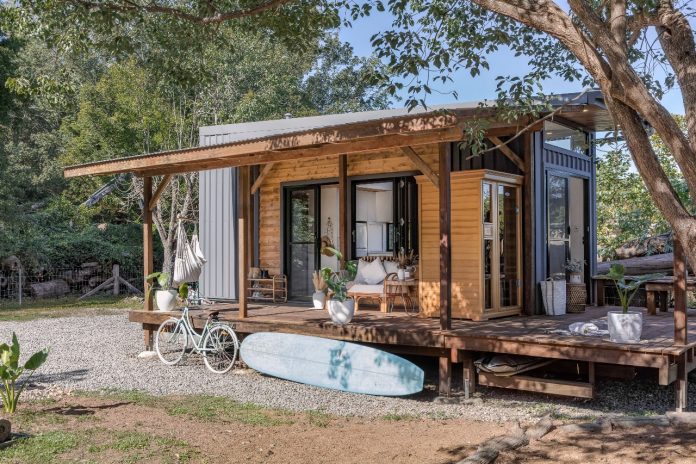The urgent need to find affordable housing solutions is forcing governments to rethink the rules and driving a big boom in small homes.
Many residents are eyeing a switch to minimalist living, including granny flats, caravans and shepherd’s huts, to make ends meet in the current housing affordability crisis.
And Coolum-based Aussie Tiny Houses is one of those businesses rolling along with this trend, supplying demand for its designs Australia-wide, as renters and prospective homeowners are hit from all angles.
In the rental market, stressed residents are being displaced by soaring weekly rents, while others have been unable to secure a spot in the “tenancy lottery”.
Some cashed-up applicants are paying tens of thousands of dollars up-front or offering $100 a week more than the advertised rate to secure a roof over their heads.
SQM Research in November 2021 put the weekly average advertised rent on the Sunshine Coast at $574: out of the reach of many singles, couples and families already struggling to put food on the table and pay for essential items such as fuel.
The median on the Sunshine Coast is now $1.108 million, the highest of any region in Australia and the second-highest in the country behind Sydney and ahead of Canberra.
Secondary dwellings on properties and tiny houses – part of the world-wide movement towards compact, minimal living – are seen as part of the affordable housing solution.
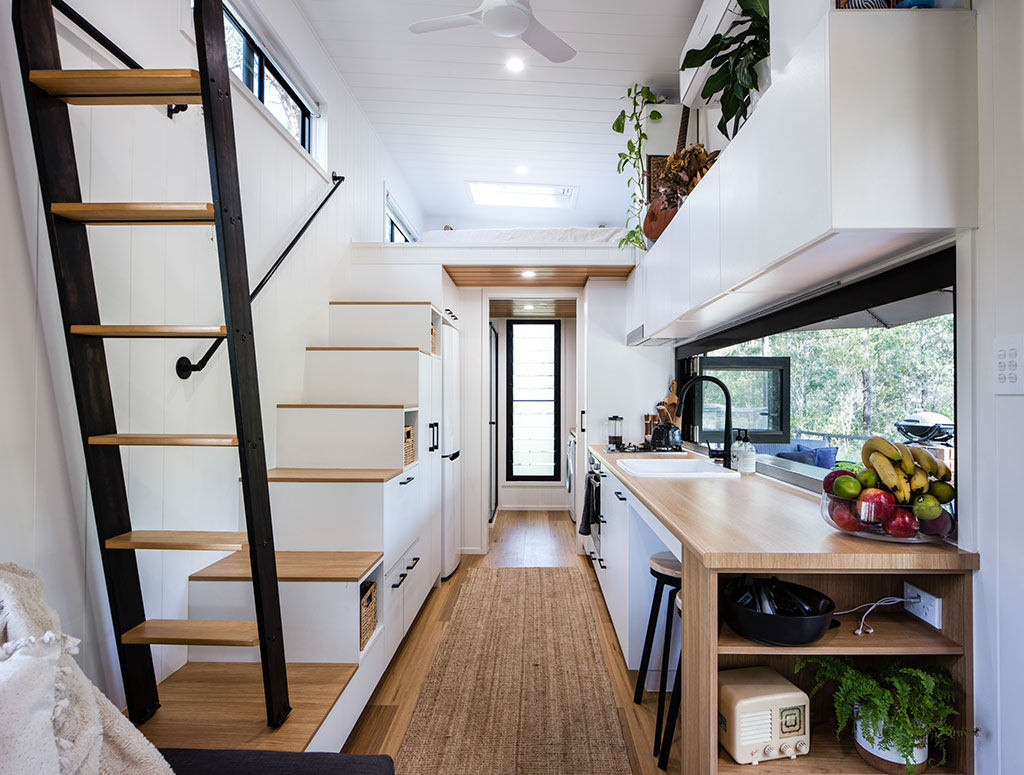
Popular small-screen shows such as Grand Designs, the Tiny House Nation American reality TV series and the UK’s Escape To The Country have brought these outside-the-box housing design options closer to our attention.
But the best-laid plans and good intentions can fall victim to government regulations if prospective tiny house homeowners don’t do enough research or tick all the compliance boxes.
The Australian Tiny House Association (ATHA) defines “tiny houses” as “moveable dwellings up to 50m2 that are suitable for residential use” … with “self-contained amenities and services and the option to be grid connected” … and can be “largely grouped into three categories: on wheels, on skids or shipping containers”.
This definition may be different to any particular council interpretation.
And varying rules can apply, depending on whether, for example, the tiny house has wheels, is permanent or temporary, a main or secondary dwelling, where it will be sited on the property and what specific local government area it will be located.
Coolum’s Aussie Tiny Houses is able to bypass the need for council planning approval because its design dimensions conform to Australia-wide regulations to be considered “caravans”.
They come with a VIN number that is pre-registered with the Department of Transport and Main Roads for Queensland customers, for example.
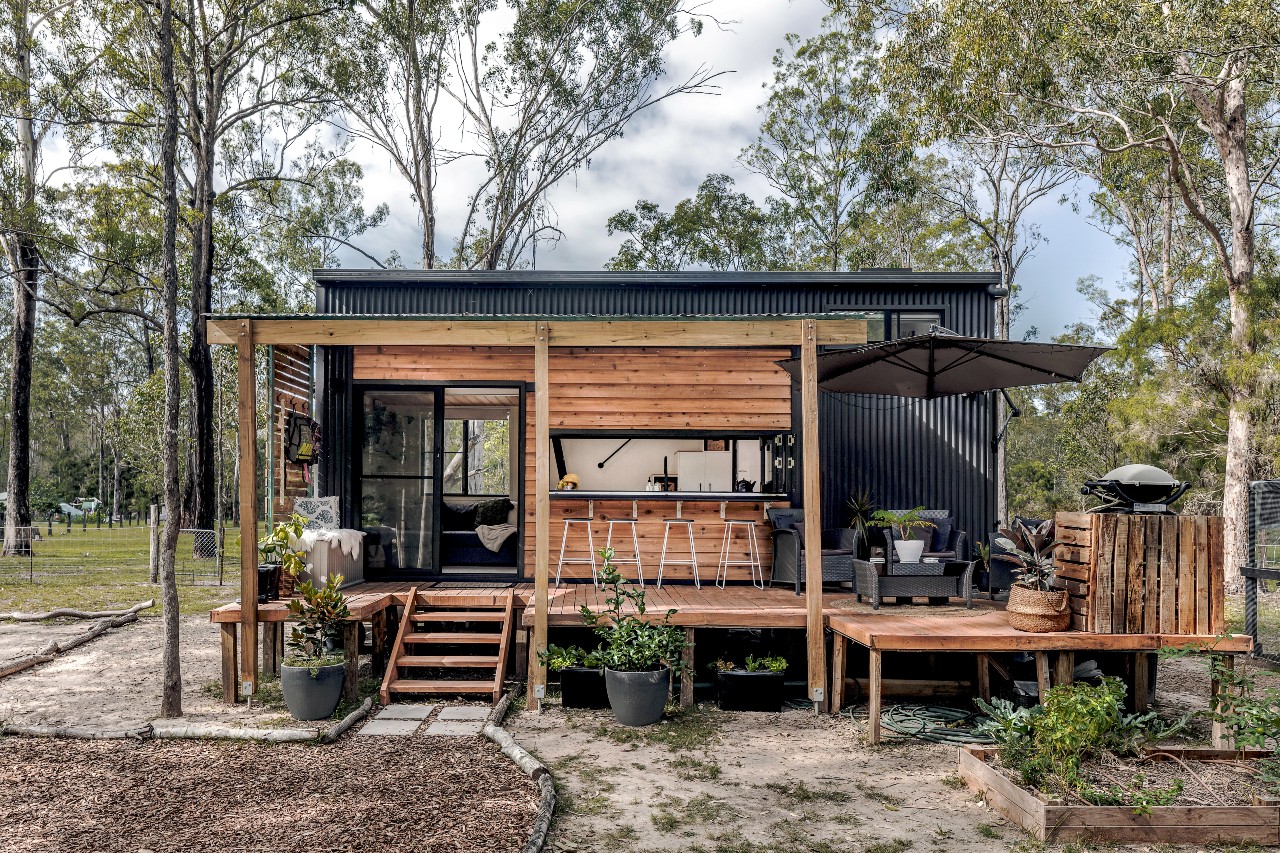
“We build our houses within the same restrictions as caravans. They can’t be over 2.4m wide and they can’t be over 4.3m in height and they can’t go over 4.5t in weight,” sales and marketing manager Alex Monteiro said.
“The tiny house can be towed on the road. But to park the ‘house’ and live in the ‘house’, customers need to consult their local council to see what applies to caravans. Then the same would apply for our houses.
“We’ve heard stories of people who bought a tiny house that was not within restrictions and they had a hard time, having to move places every now and then. It becomes a bit of a nightmare.”
The business offers tiny house lock-up from $72,900 and complete turn key lock-up from $96,900.
Mr Monteiro believes councils need to act to be more accommodating towards tiny houses to solve some of the current housing problems nation-wide, especially since many local authorities limit the amount of time anyone can live in a caravan in one spot.
“When we started the business in 2017, we did look into tiny houses as a housing solution,” he said.
“With this shortage in accommodation, especially here in Queensland and around the Sunshine Coast, I definitely think that councils should look into that. Not only be more flexible but truly understand what a tiny house is and possibly allowing people to park their ‘house’ and live in it.
Do you have an opinion to share? Submit a Letter to the Editor with your name and suburb at Sunshine Coast News via: news@sunshinecoastnews.com.au
“Anything would help. Right now there is a lot of grey areas and to be honest, some councils they don’t even know how to deal with it (tiny houses).”
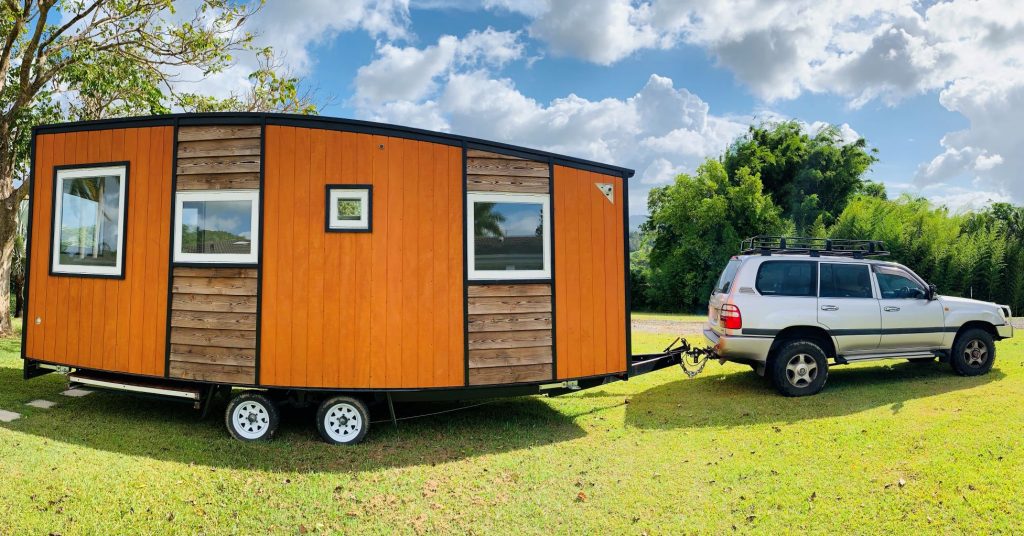
ATHA warns that tiny houses on wheels and skids do not fit neatly into any regulations at the national, state or local level.
In Queensland, Department of Transport and Main Roads rules and vehicle regulations define how a tiny house on wheels is registered, size limitations for road transportation and specifications for towing.
ATHA also points out that tiny houses on wheels are considered caravans by many local governments due to their mobile nature and are commonly faced with local law restrictions on the period of time a person can live in one in a particular spot.
A Sunshine Coast Council spokesperson said the council acknowledged that tiny houses were growing in popularity and encouraged anyone planning to build or purchase one to call 5475 PLAN (5475 7526) to seek advice based on their specific circumstances.
The council defines a tiny house as: a small house, generally less than 45m2 in floor area.
It says tiny houses are typically constructed as permanent buildings, or they may be transported to site as moveable buildings (otherwise known as “tiny house on wheels”).
Vehicles which are permanently converted to tiny houses on the Coast are subject to the same planning, building and plumbing laws that apply to a permanent building.
Tiny houses do not include registered vehicles, or vehicles which are capable of being registered, such as caravans, trailers and vehicles under the council definition.
The council employs an education-first approach when compliance issues arise, but to date, no significant compliance matters have been raised about tiny houses.
“The main compliance issues relate to the conversion of tiny houses from a mobile vehicle to being fixed to the land, requiring service connections such as plumbing and compliance with the National Construction Code,” the spokesperson said.
Tiny house homeowner Louise Southerden said research and getting upskilled were key in the design and construction phases.
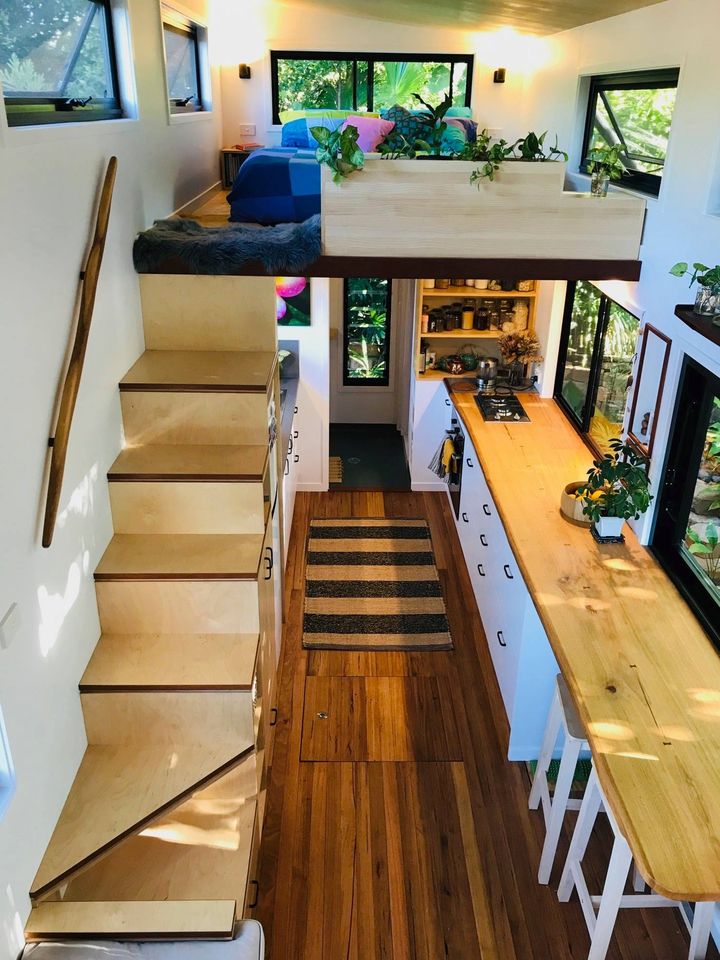
But finding the right area to live with progressive council attitudes was essential.
“The biggest pitfall to tiny house living is finding a permanent place to live in it, long-term, without the local council asking you to move on,” she said.
“But the tiny house movement isn’t showing any signs of slowing down, because tiny houses make sense as a viable housing option for so many people, particularly in this era of climate change and the housing affordability crisis.
“So, the regulations are sure to catch up at some point.”
- SCROLL DOWN TO READ MORE FROM LOUISE ON TINY HOUSES
Emma Monsuere is hoping to start afresh on the Sunshine Coast from country NSW with her dachshund Sonny and has posted on community Facebook pages seeking a spot to park her “tiny”.
She was overwhelmed by offers.

“I’ve only just purchased the tiny and it’s my first time trying to find a spot to park it,” she told Sunshine Coast News.
“I was concerned it would be very difficult to find a space. However, since posting my ad in multiple FB groups, I have actually been overwhelmed by the amount of people that gave either messaged or called me to offer a space.
“I haven’t 100% secured a spot, but I am in the process of liaising with a few landowners that I feel have a suitable spot.”
One social media comment wondered whether local councils could set aside parcels of land specifically for tiny house communities, and Emma agrees that would be a step in the right direction.
“At the end of the day, we don’t need much to survive, and if councils embraced supporting alternative housing solutions, they could make just as much income from leasing land to tiny home owners as they would make from a ratepayer per annum,” she said.
Sunshine Coast Council provides a development factsheet under tiny houses on its website.
The factsheet says tiny houses are “assessable development” pursuant to the Planning Act 2016 and Building Act 1975, which means they require a building and plumbing permit just like a conventional dwelling, and must comply with the Building Code of Australia (BCA) as class 1a single dwellings.
A planning approval (development permit) is generally not required for a tiny house in our area, provided it complies with requirements in the dwelling house code at all times. Where the tiny house is unable to comply with one or more of those requirements, a planning approval from council will be required.
It is recommended prospective tiny house homeowners speak with a private building certifier or planning consultant to discuss any proposal, and determine what building and planning requirements apply to the design and property.
BIG ADVANTAGES OF A TINY HOUSE
Louise Southerden, travel writer and passionate sustainability advocate who runs the No Impact Girl Facebook page, gives her perspective on life as a tiny house homeowner.
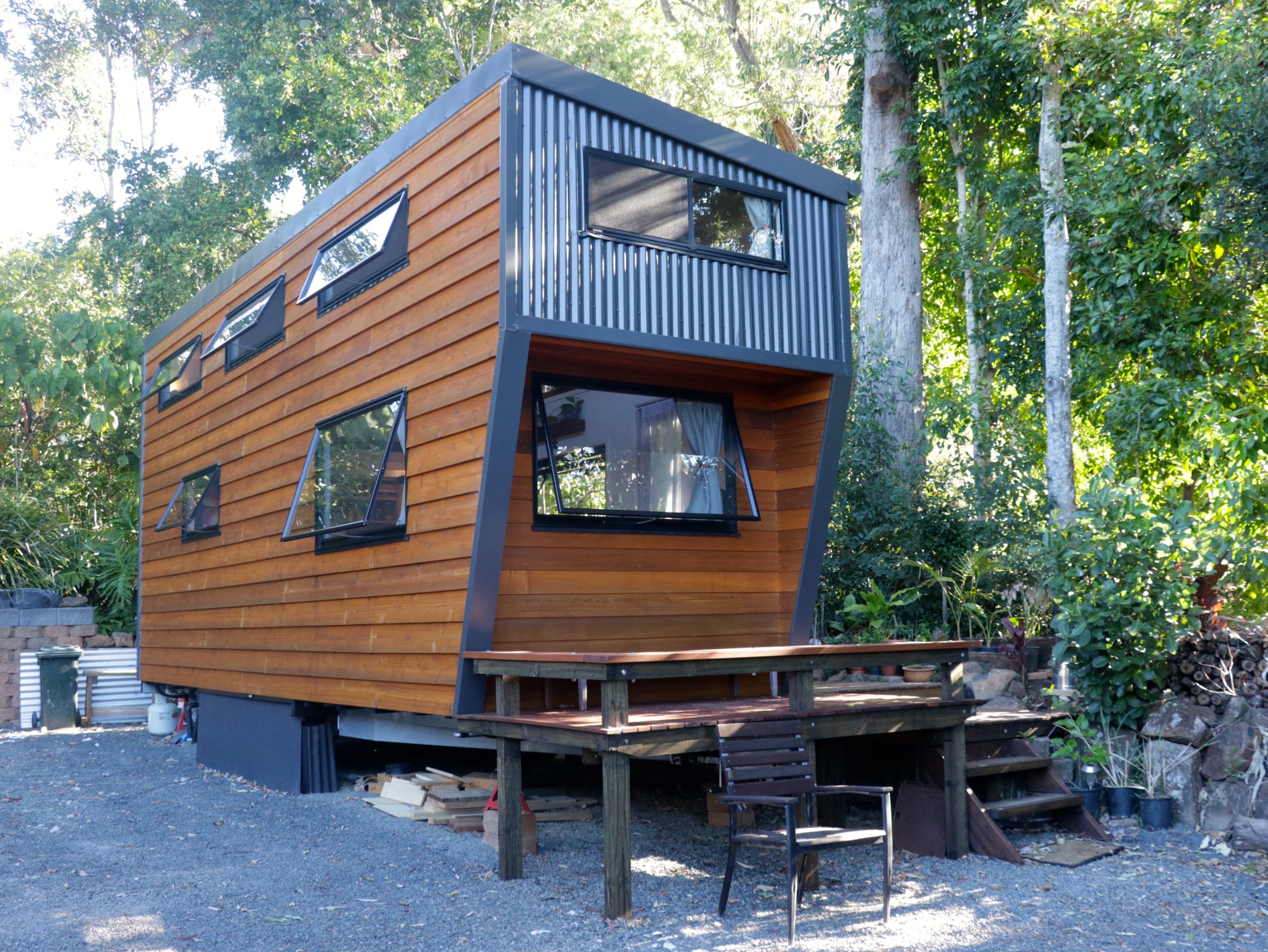
Why did you decide to go “tiny”? How long had you been thinking about it?
I’d been thinking about ways to sidestep the traditional housing model for a long time, but the idea of building and living in a tiny house became a possibility for me about two years ago – a year before we started building it.
I did a tiny house building workshop with Fred’s Tiny Houses in 2018, carried on thinking about it and finding out more about them for another couple of years. Then when Covid hit in early 2020, that seemed the perfect time to design and build one – it took my partner and me about six months to design it and eight months to build it and I’ve been living in it for about a year now.
Tiny houses just ticked some important boxes for me: they’re more affordable, have a smaller environmental footprint and promote a simpler, more minimalist way of living than regular houses. The current housing affordability crisis was a big factor. As a long-time renter, I was becoming increasingly concerned that I wouldn’t be able to keep living in the town I live in. I also liked the idea of being able to own my own home, for the first time in my life, without being saddled with a big mortgage.
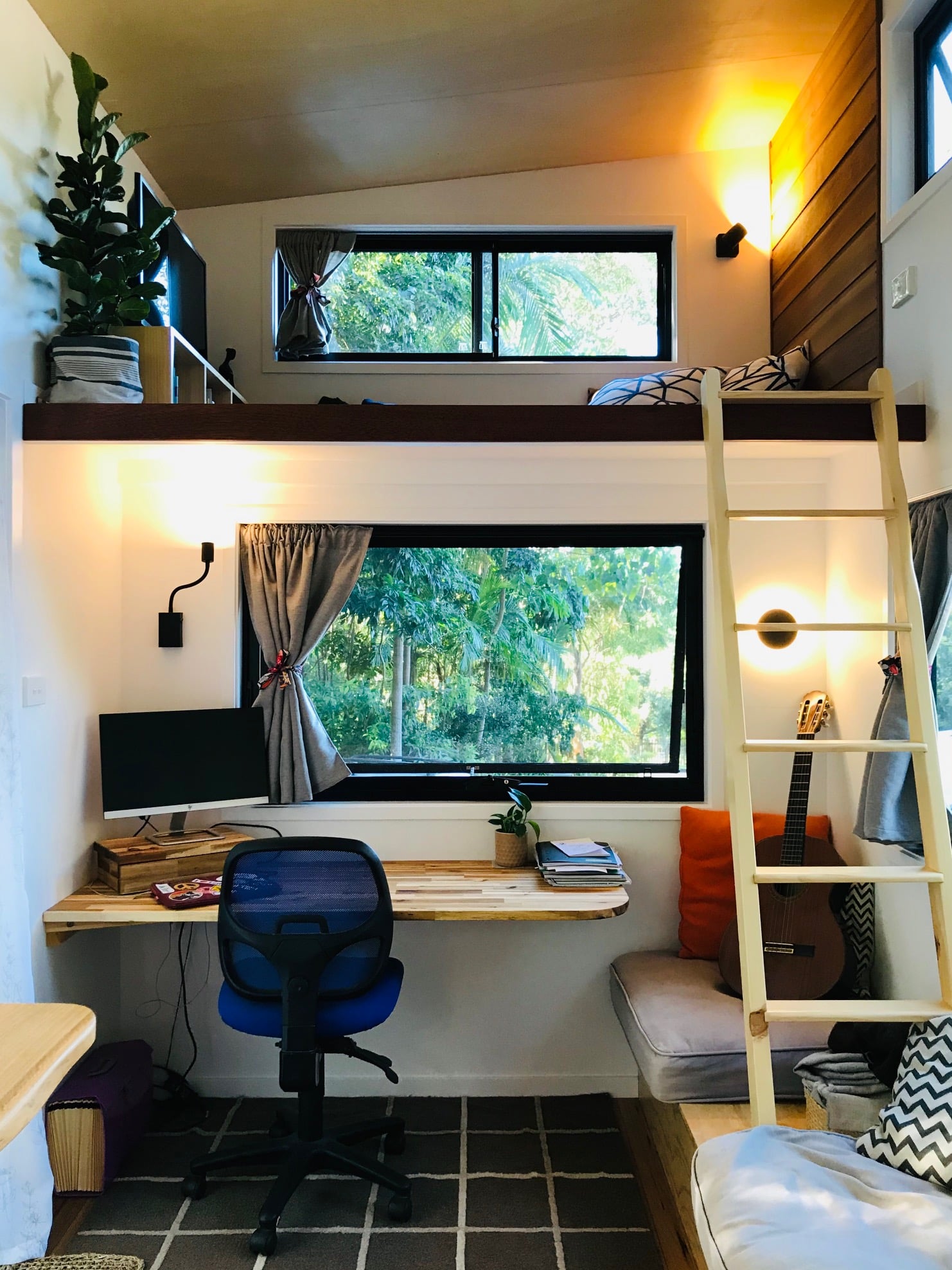
What type of research did you do before building it and what type of regulations did you have to comply with for your council area?
I did lots of research! About interior design, building materials and techniques, off-grid living, trailers … There’s so much to think about, as with any house, and a tiny house really has to be well designed to maximise the small space (mine has a total floor area of 25 square metres, including two lofts). I did the tiny house building workshop, then a woodworking workshop about a month before, but otherwise I had no building experience. My partner did, but he’d never built a house. The tiny house movement started as a DIY movement so, inspired by others who had done it before us, we felt it was achievable.
What do you “miss” if anything from the space of more conventional housing? Did you move from a house or an apartment?
On rainy days, I sometimes miss having space to hang wet clothes and raincoats, but I’m planning to build a covered deck at some point, which will solve that problem. I do have to be tidy; a small space gets messy very quickly – though it doesn’t take long to get things ship-shape again, either. Other than that, there’s nothing I miss from living in a regular-sized house. I love having everything I need within reach, only having a small space to clean and maintain, climbing my stairs to my cosy loft bed each night. I have lived in rental houses all my life so didn’t downsize from a regular house, which made the transition easier. I can honestly say that my tiny house is one of the most comfortable homes I’ve ever lived in, because it was designed for me and my lifestyle.
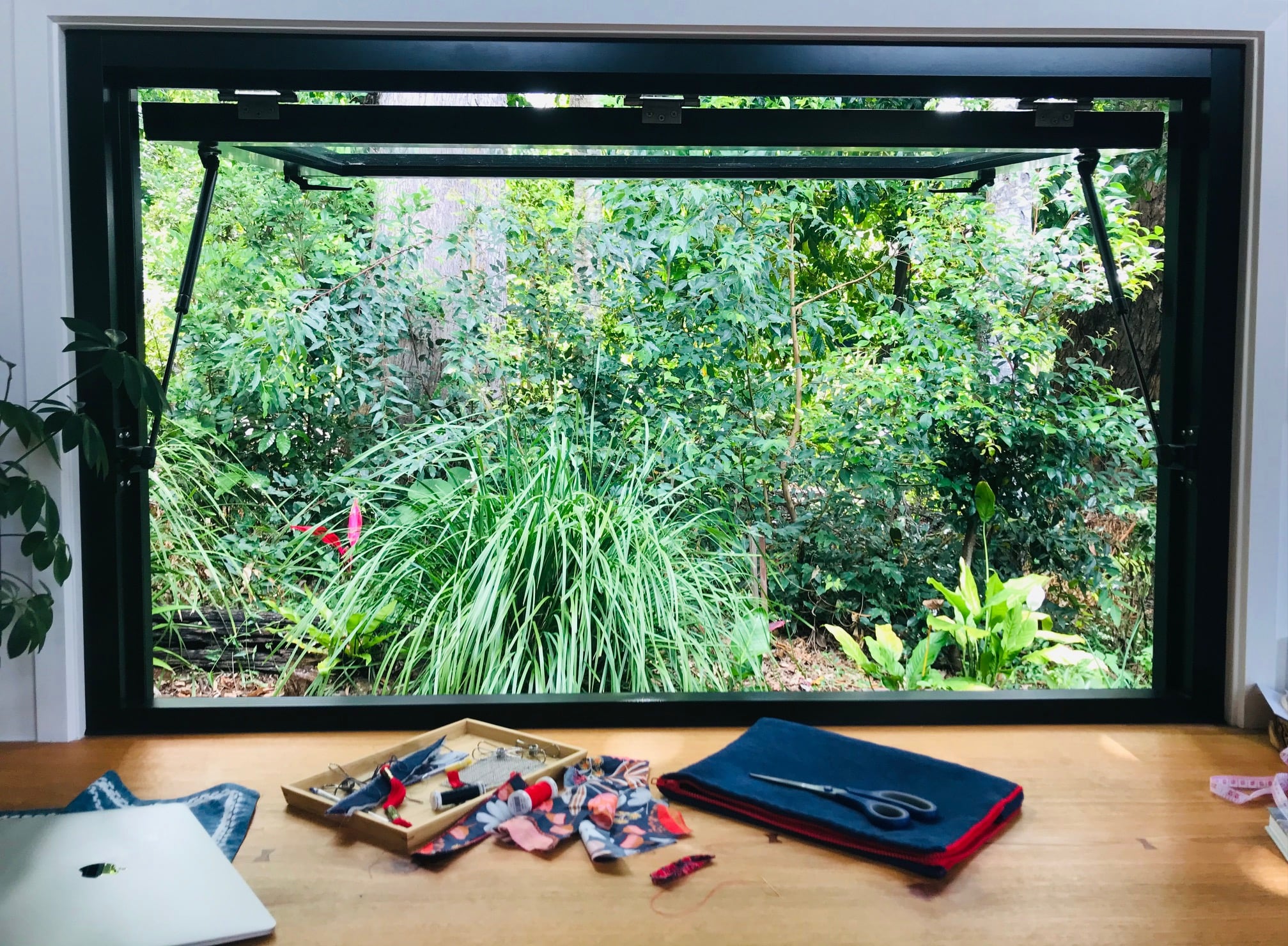
What advice would you give anyone thinking about building or erecting a tiny house? What are the pitfalls?
First: be prepared. Do as much research as you can before building or buying your tiny house, and make as many decisions as you can before the build actually starts, when you have time to explore options. If you’re building your own tiny house and this is a completely new thing for you, I’d strongly recommend getting some skills before you start: do a woodworking course, learn how to use power tools, practise making something small. And be patient: building always takes longer (and costs more!) than you expect it to.


